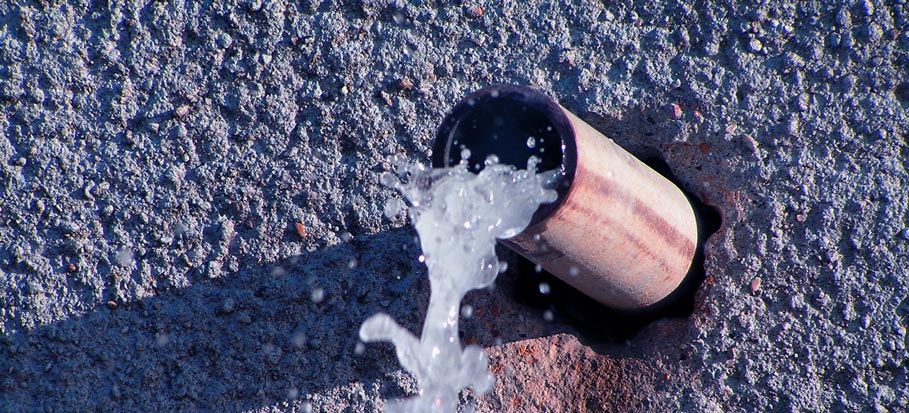We've discovered this great article about Detecting hidden plumbing leaks below on the net and decided it made good sense to write about it with you on my blog.

The moment you discover a leak, calling your plumber for repairs is the most effective solution. Some little water leakages might not be noticeable. If you can not detect it with your nude eyes, below are some hacks that aid.
Early discovery of leaking water lines can mitigate a potential disaster. Apart from conserving you cash, it will reduce the irritation and disappointment.
Check Water Intake
Analyze your water costs as well as track your water usage. As the one paying it, you should see if there are any kind of discrepancies. If you spot sudden changes, regardless of your usage being the same, it suggests that you have leakages in your plumbing system. Keep in mind, your water costs need to fall under the same array each month. A sudden spike in your costs suggests a fast-moving leakage.
Meanwhile, a consistent increase every month, despite having the same behaviors, shows you have a slow-moving leakage that's also slowly rising. Call a plumber to completely examine your building, particularly if you really feel a warm area on your flooring with piping below.
Examine as well as Analyze the Circumstance
House owners need to make it a behavior to examine under the sink counters as well as even inside cupboards for any type of bad odor or mold growth. These two red flags suggest a leakage so timely attention is needed. Doing routine assessments, even bi-annually, can conserve you from a significant problem.
Examine the Water Meter
Examining it is a surefire means that helps you discover leakages. If it relocates, that indicates a fast-moving leakage. This implies you may have a sluggish leak that could also be underground.
Asses Exterior Lines
Do not fail to remember to check your exterior water lines too. Needs to water leak out of the connection, you have a loosened rubber gasket. One small leak can lose loads of water and also spike your water expense.
Do a Food Coloring Examination
When it involves water consumption, 30% originates from commodes. Examination to see if they are running correctly. Decline specks of food shade in the storage tank as well as wait 10 mins. If the shade somehow infiltrates your dish throughout that time without flushing, there's a leakage between the storage tank as well as bowl.
If you recognize your home is already old, keep a watchful eye on your heating units, pipes, pipelines and so on. Check for discolorations and deteriorating as the majority of home appliances as well as pipes have a life expectancy. They will likewise naturally degrade because of tear and also put on. If you believe dripping water lines in your plumbing system, do not await it to rise. Call an expert plumber today so you do not wind up with a dreadful mess in your house.
The moment you locate a leakage, calling your plumber for repair services is the finest service. Some tiny water leakages might not be visible. Examining it is a proven method that helps you discover leakages. One small leak can waste tons of water and also surge your water bill.
If you believe dripping water lines in your plumbing system, don't wait for it to rise.
How to Know If Your Home Has a Hidden Leak
Water Meter Reveals Inexplicable Water Usage
If you’d like to test whether or not there’s a leak somewhere in your home, you can do this using your water meter. Here is how to conduct the test:
Don’t use any water in your home for at least 30 minutes; this also means not turning on faucets or water-using appliances.
Go outside, and check your water meter for activity.
If your water meter shows that there was activity, even though no one was using any water, this proves that there is a leak in your home.Visible Mold or Mildew Growth
Leaks behind walls create moist, dark environments that allow mold and mildew to grow and thrive. Eventually, you might see mold growth forming on the wall closest to a hidden leak.
If mold is growing in an area that receives a high amount of moisture, such as a bathroom, it may simply be an indication that better ventilation is needed. However, if you see mold growth on a wall or the ceiling in an area where you would not expect, you probably have a hidden leak.
Musty, Mildew Odor
Sometimes you might not be able to see the mold or mildew that is growing as a result of a leak. However, the smell can give the problem away just as easily. If you catch a whiff of something musty, there’s a good chance that old water is collecting somewhere in your home that you can’t see.
Stained/Warped Walls, Ceilings, or Floors
When your home soaks up water, a variety of red flags can become visible, including ceiling stains, bubbling drywall, warped walls, and sagging floors. While these issues can be caused by excess humidity, they can also be signs that a pipe or plumbing connection has started leaking behind your walls.
Inexplicably High Water Bill
After a while, you get a general sense for what your water bill should be. If you own a pool or sprinkler system, your bill will tend to be higher during summer. However, if you receive a water bill that seems especially high, and you can’t figure out what caused it, then you may have a hidden leak somewhere that’s increasing your bill.
https://www.plumbingjoint.com/blog/2019/july/how-to-know-if-your-home-has-a-hidden-leak/

We are very enthusiastic about Top leak detection hacks and I really hope you appreciated the piece. If you liked our post kindly don't forget to pass it around. I take joy in reading our article about Hacks to detect leaks.